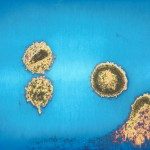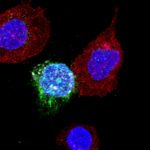Lien vers Pubmed [PMID] – 39255323
Lien DOI – 10.1371/journal.pcbi.1012434
PLoS Comput Biol 2024 Sep; 20(9): e1012434
While most individuals suffer progressive disease following HIV infection, a small fraction spontaneously controls the infection. Although CD8 T-cells have been implicated in this natural control, their mechanistic roles are yet to be established. Here, we combined mathematical modeling and analysis of previously published data from 16 SIV-infected macaques, of which 12 were natural controllers, to elucidate the role of CD8 T-cells in natural control. For each macaque, we considered, in addition to the canonical in vivo plasma viral load and SIV DNA data, longitudinal ex vivo measurements of the virus suppressive capacity of CD8 T-cells. Available mathematical models do not allow analysis of such combined in vivo-ex vivo datasets. We explicitly modeled the ex vivo assay, derived analytical approximations that link the ex vivo measurements with the in vivo effector function of CD8-T cells, and integrated them with an in vivo model of virus dynamics, thus developing a new learning framework that enabled the analysis. Our model fit the data well and estimated the recruitment rate and/or maximal killing rate of CD8 T-cells to be up to 2-fold higher in controllers than non-controllers (p = 0.013). Importantly, the cumulative suppressive capacity of CD8 T-cells over the first 4-6 weeks of infection was associated with virus control (Spearman’s ρ = -0.51; p = 0.05). Thus, our analysis identified the early cumulative suppressive capacity of CD8 T-cells as a predictor of natural control. Furthermore, simulating a large virtual population, our model quantified the minimum capacity of this early CD8 T-cell response necessary for long-term control. Our study presents new, quantitative insights into the role of CD8 T-cells in the natural control of HIV infection and has implications for remission strategies.



